What are the Most Poisonous Mushrooms in Ohio?
Finding the most poisonous mushrooms in Ohio or the Midwest was not as easy as I thought. Some are deadly, others are poisonous, and plenty of them don’t show appear often.
That’s why I created a list of the 10 Most Poisonous Mushrooms in Ohio!
This ultimate guide will give you the most poisonous mushrooms in Ohio, how to identify them, and even where to find them in your yard.
***DISCLAIMER***
This article is intended to be for entertainment purposes only. These mushrooms are poisonous to humans and animals.
Do not use this as a guide to forage mushrooms. Do not use this as a guide to prepare, cook, and eat mushrooms.
You should work with your local mycological society, foraging experts, and local community clubs for identifying, foraging, and potentially eating mushrooms. In addition, you should never forage mushrooms on your own or use this guide to assist you in foraging mushrooms.
Read THIS Before Identifying the Most Poisonous Mushrooms in Ohio
Knowing the type of mushroom growing in your yard can be the difference between a fascinating hobby that can result in a nutritious and edible food source and a deadly toxin. Always make sure to work with your local city and gardening club before eating mushrooms found in the wild.
It is important to pay close attention to the following when picking or eliminating mushrooms in your yard:
- The size, including the cap, gills, scales, spores, and stem.
- The color, including the cap, gills, scales, spores, and stem.
- Location, both in the United States and in your yard
- Odor and even taste
And if you want to learn more about poisonous mushrooms that grow in your yard watch the below video!
10 Most Poisonous Mushrooms in Ohio
#1. False Morel Mushroom (Gyromitra esculenta)
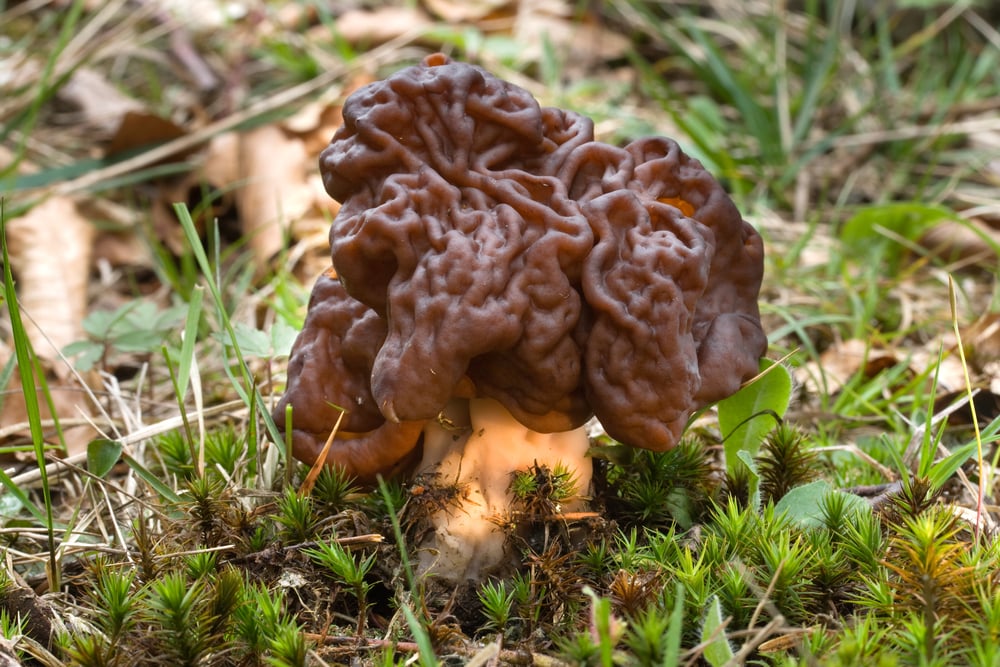

Specifications:
- The False Morel Mushroom has a red-brown cap, yellowish spores, broad red-brown gills, and thick, cluster stalks.
- This type of mushroom grows from early spring to summer throughout the United States, including Ohio.
- It is important to kill these mushrooms when you see them as they are not only poisnous to humans, but they will slowly destroy the land in woodlands and mountainous areas.
- This mushroom should be not consumed. This mushroom can be confused with its edible cousin the Morel.
#2. Liberty Cap Mushroom (Psilocybe semilanceata)
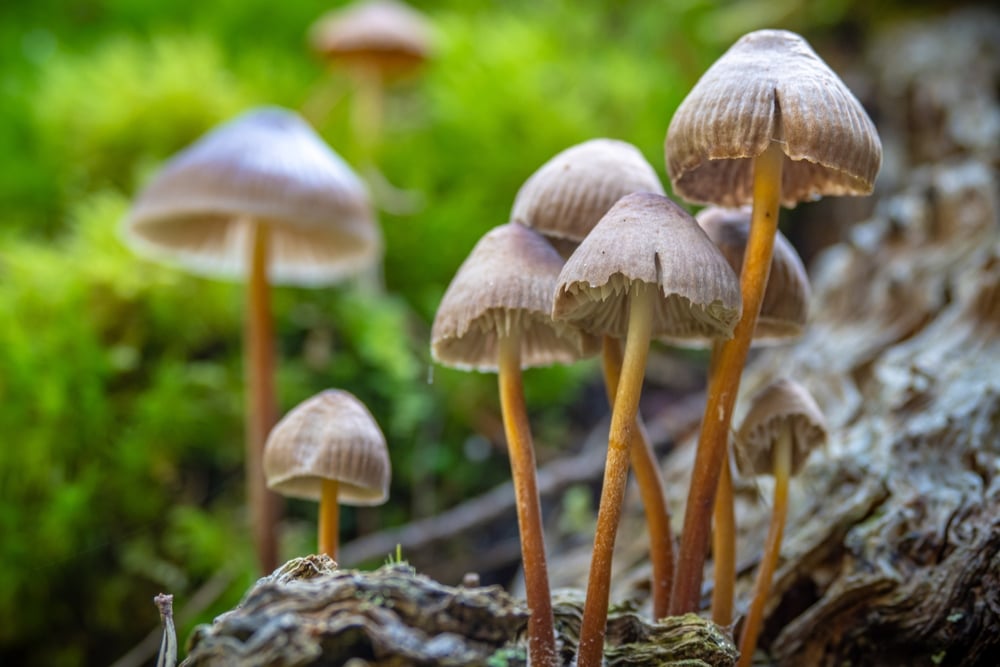

Specifications:
- The Liberty Cap Mushroom has a cream cap, purple spores, thin cream and brown stalks, and cream gills.
- This type of mushroom grows from summer and fall throughout the world, including Ohio, Ireland, and Wales. It is one of the most common poisonous mushrooms you will find on your lawn, farms, and rolling hills.
- You should immediately destroy these mushrooms if seen. Not only are they poisonous to humans and animals, but they can wreak havoc on trees and other plants in the area.
- This mushroom should not be consumed.
- What makes these mushrooms so poisonous is that they can be mistaken for non-lethal mushrooms that look similar, but have subtle differences in the features of the cap and gills.
#3. Fly Agaric Mushrooms (Amanita muscaria)
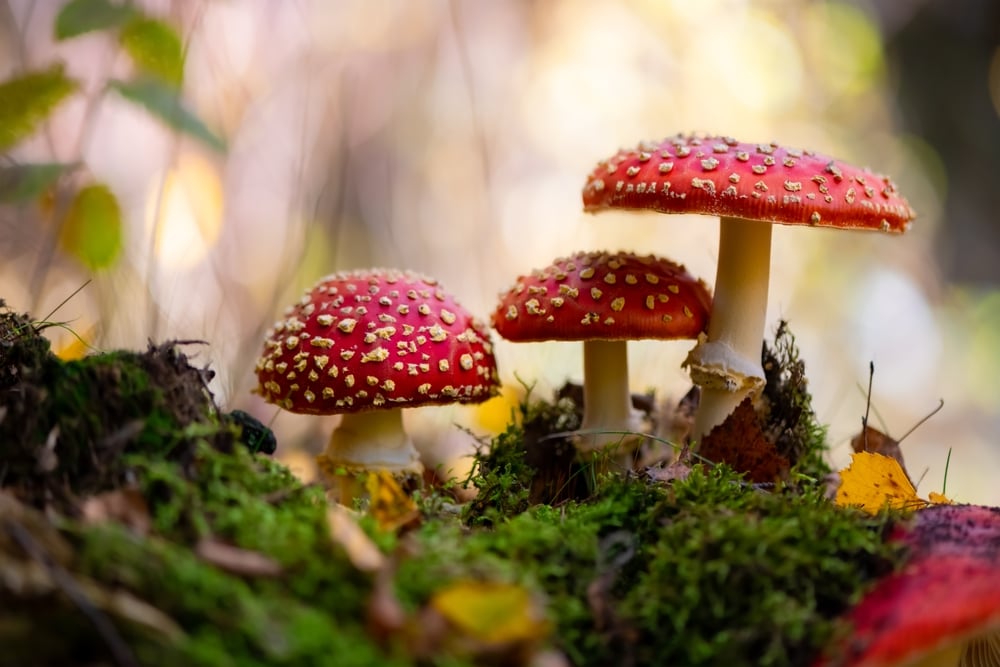

Specifications:
- The Fly Agaric Mushroom has a deep red and orange cap, white spores, narrow white stalks, and white to pale yellow gills.
- This type of mushroom grows from late summer to late fall throughout the world, including United States, Ireland, and Britain. This mushroom should not be consumed.
- You should kill these mushrooms unless you want them to be a natural pesticide or herbicide in your yard. This mushroom is common in Ohio and will grow on hardwood, including spruce, birch, and pine trees.
- This mushroom should not be consumed.
- The Fly Agaric Mushroom is the type of mushroom you will typically see and read about in fairy tales and will even see in fairy gardens across the world.
#4. Banded Mottelgill (Panaeolina foenisecii)
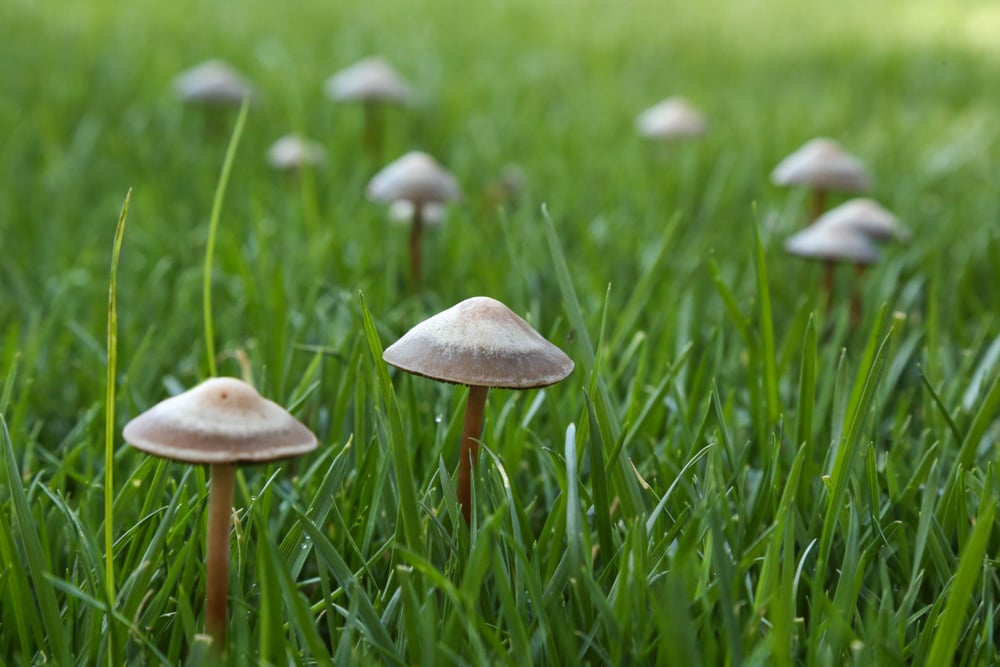

Specifications:
- The Banded Mottlegill has a white and beige cap, white spores, thin white or beige cream stalks, and beige/brown gills.
- This type of mushroom grows from spring to winter in the United States. While it can also be found in Ireland and Great Britain, it is much rarer. The Banded Mottlegill Mushroom is one of the most common poisonous yard mushrooms that should not be eaten.
- You should destroy the Banded Mottlegill mushroom in your yard. These are very dangerous to humans and animals and can hurt trees, plants, and grass around them.
- This mushroom should be not consumed!
#5. Haymaker Mushroom (Panaeolus foenisecii)
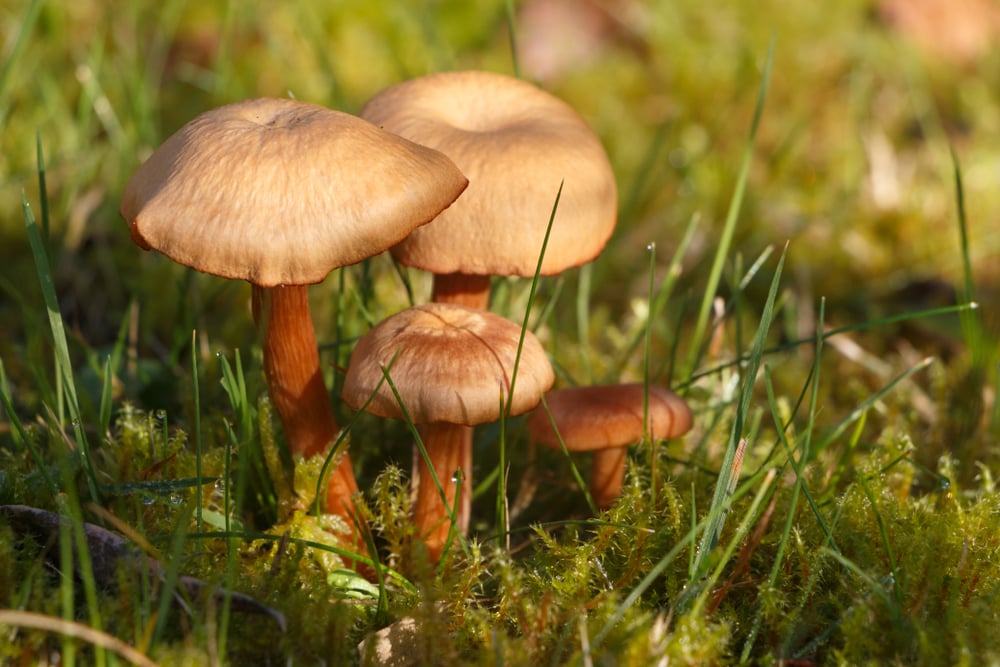

Specifications:
- The Haymaker Mushroom has a Brown cap, white spores, thin, small brown stalks, and brown gills.
- This type of mushroom grows from spring to early winter in Ohio and the United States. It can also be found throughout the Northern Hemisphere of the world. Humans and animals should not eat mushrooms.
- The Haymaker Mushroom is the most common poisonous yard mushroom in Ohio. You can expect it whether you mow or fertilize your law. While it is not a parasite to your lawn or plants, it should be removed so that it isn’t foraged by children. You will find this mushroom in grassy areas!
- This mushroom should not be consumed!
- The Haymaker’s Mushroom is also known as the Mower’s Mushroom as this is a common yard mushroom seen when mowing or tending to one’s lawn.
#6. Jack O Lantern Mushroom (Omphalotus olearius)
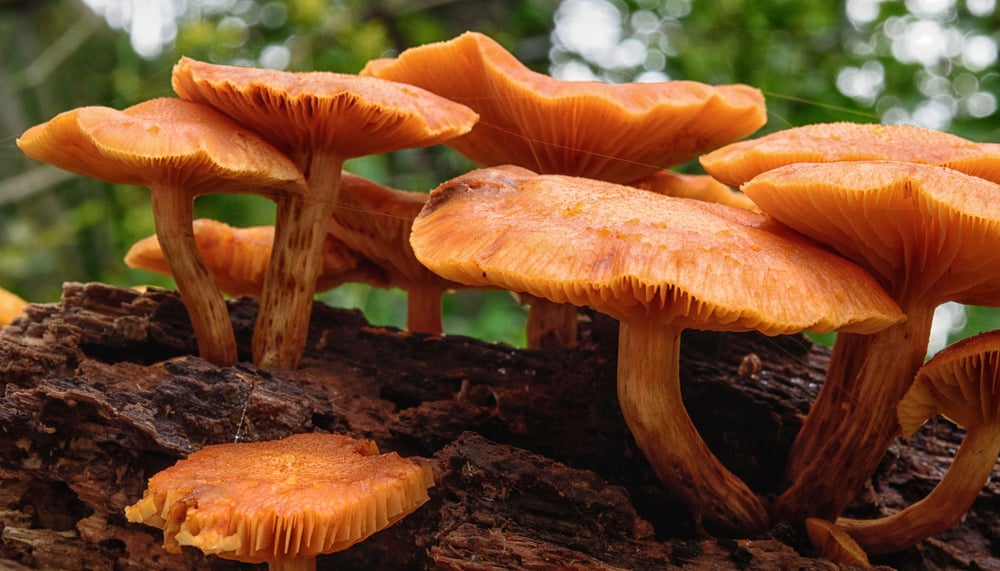

Specifications:
- The Jack O Lantern Mushroom has an Orange and Yellow cap, white spores, thick, orange and dark yellow stalks, and dark orange gills.
- This type of mushroom grows from early fall to winter in the United States, Ireland, Britain, and Southern Europe. No one or no animal should consume this type of mushroom.
- The Jack O Lantern Mushroom can be found in Ohio, the United States, and throughout Southern Europe. You will find it under trees in shaded areas, but should not be foraged.
- This mushroom should not be consumed!
- There are other types of similar mushroom species to the Jack O Lantern Mushroom that will grow in Europe. Regardless of the specific type, they have similar characteristics and should be treated the same way.
#7. Destroying Angel Mushroom (Amanita virosa)
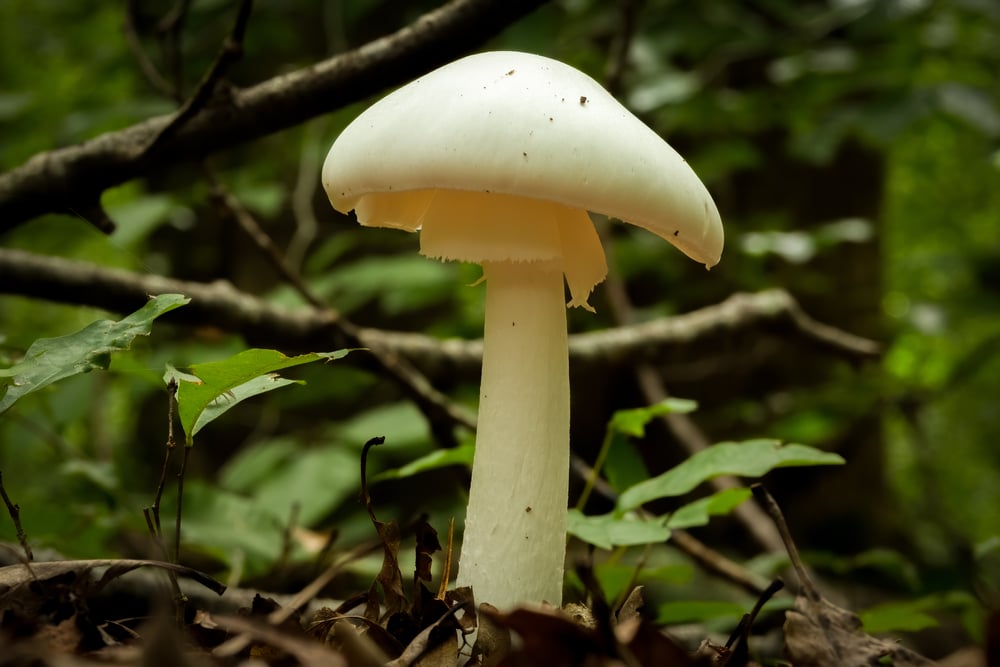

Specifications:
- The Destroying Angel Mushroom has a white cap, white spores, tall and thick white stems, , and white gills.
- This type of mushroom grows from summer to fall in the United States, Ireland, and Britain. No one or no animal will typically consume this type of mushroom as it is the deadliest common yard mushroom on the planet.
- The Destroying Angel Mushroom can be found in yards in Ohio and the United States. You will find it in grassy areas on the edge of wooded areas.
- This mushroom should not be consumed! It is the deadliest mushroom on the planet and can cause organ failure and even death.
- The Destroying Angel Mushroom is one of the most misidentified mushrooms by novice mushroom foragers. You should take extra precautions when foraging mushrooms in your yard.
#8. Deadly Galerina Mushroom (Galerina marginata)
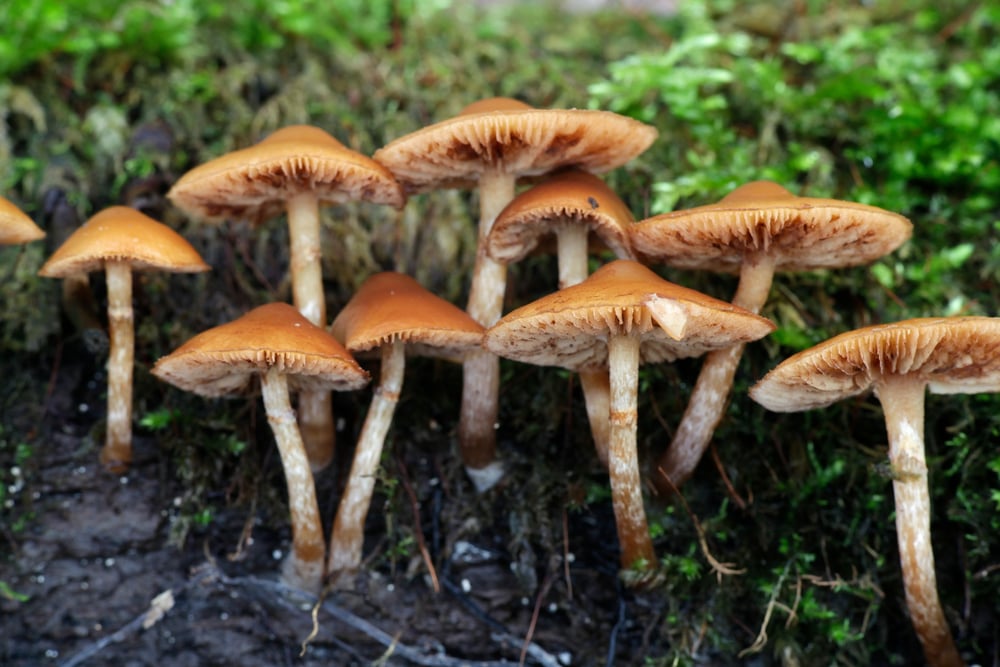

Specifications:
- The Funeral Bell Mushroom has a honey yellow and brown cap, brown spores, tall and thick brown stems, cream gills.
- This type of mushroom grows from summer to fall in the United States, Ireland, and Britain. No one or no animal should consume this type of mushroom as it is considered a deadly yard mushroom.
- The Funeral Bell Mushroom can be found in yards in Ohio and the United States. You will find them in Stumps, Dead Trees, Broken Branches, and sometimes even dead leaves in the fall.
- This mushroom should not be consumed!
- It should be noted that even though the Funeral Bell Mushroom typically grows in the summer and fall in Ohio, in some parts of the United States it can grow any time of the year!
#9. False Parasol (Chlorophyllum rhacodes)
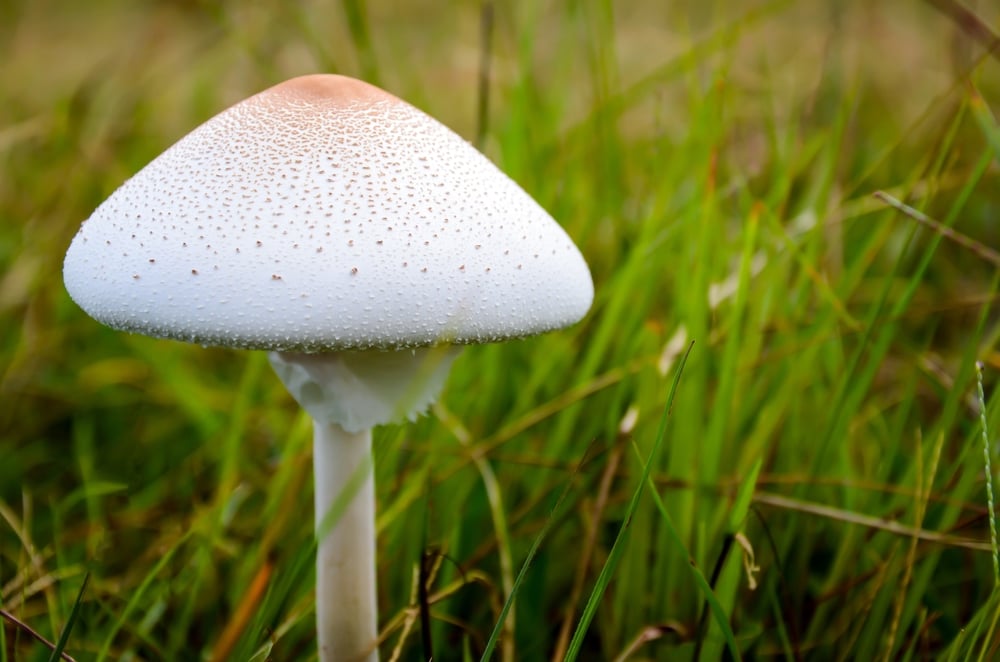

Specifications:
- The False Parasol Mushroom has a white and cream cap, white spores, tall and thick white and cream stems, and cream gills.
- This type of mushroom grows from summer to fall in the United States, Ireland, and Britain. No one or no animal should consume this type of mushroom as it is considered a deadly yard mushroom.
- The False Parasol Mushroom can be found in yards in Ohio and the United States. You will find them in Woodland Areas and also in Humous-Rich Soil in Gardens.
- This mushroom should not be consumed!
- The False Parasol Mushroom is another mythical mushroom that can be found in European folklore and is known for its connection with fairies and fairy rings.
#10. Deadly Webcap (Cortinarius rubellus)
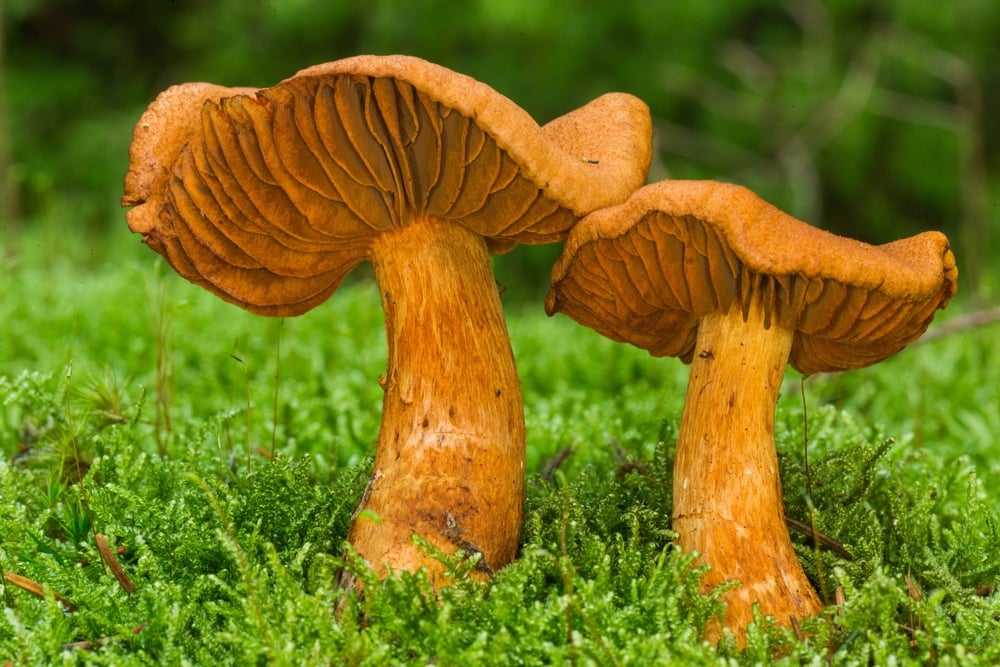

Specifications:
- The Deadly Webcap Mushroom has a tawny brown cap, brown spores, tall and thick yellow stems, and tawny brown gills.
- This type of mushroom grows from summer to winter in the United States, Ireland, and Britain. No one or no animal should consume this type of mushroom as it is considered a deadly yard mushroom.
- The Deadly Webcap Mushroom can be found in yards in Ohio and the United States. You will find them under pine and spruce trees and in damp soil.
- This mushroom should not be consumed!
Common Factors of the Most Common Poisonous Mushrooms

As a reminder, the below factors are common for the most poisonous mushrooms
- Most are parasitic to humans and should not be consumed.
- These mushrooms can be found throughout your yard, but most commonly on trees and in wet areas of your yard.
- Each mushroom on this list has a common fungus relative that it can be mistaken for. Leverage this guide to have the best chance of identifying common yard mushrooms in Ohio.
- Most mushrooms on this list will only grow a maximum height of 6 inches tall and 3 or 4 inches wide.
- A majority of the mushrooms on this list will have no smell to them.
And remember that you should pay attention to this guide, other local experts, and your local mushroom clubs before foraging. This can be the difference between a nutritious and delicious mushroom and a harmful and even deadly fungus.
If you want to learn about other mushrooms, chickens, vegetables, fruits, herbs, and bees check out thegardeningdad and search for the plant you want to grow in the upper right-hand corner.